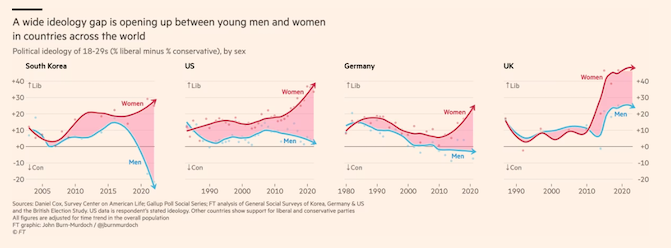Recent protests on American campuses regarding the situation in Gaza have been marked by widespread student activism and institutional responses. These protests have seen students engage in various forms of activism, including walkouts, sit-ins, and the establishment of “Solidarity Encampments.” For example, at the University of Pittsburgh, students declared a “Liberation Zone,” while at the University of Texas at Austin, a significant walkout and sit-in led to the deployment of state troopers and arrests of students. Similarly, at Yale University, a group of graduate students initiated a hunger strike to protest the university’s investments related to the conflict.
Tag: youth vote
PPM Newsletter
We’ve moved our newsletter, formerly hosted on Substack, to this blog.
The (youth) gender divide
Young voters have been a constant theme for this newsletter. One article published recently has caused a great deal of controversy by suggesting that, contrary to popular belief, Gen Z can actually be considered as two distinct groups rather than one. Specifically, women aged 18 to 30 are significantly more liberal compared to their male counterparts [paywall]. This marks a shift from previous decades where both genders were relatively evenly distributed across liberal and conservative ideologies. In fact, the difference in liberal views between women and men in this age group is as high as 30%.

Young voters in Asia
Young voters in Asia are emerging as a critical demographic in shaping electoral outcomes. In the upcoming 2024 Indonesian general election, for instance, millennials and Gen-Z voters comprise more than half of the eligible voting population. This significant proportion underscores their potential to decisively influence the presidential and legislative elections.
In Taiwan, whom young people ultimately vote for — and how many vote at all — could be crucial in deciding the presidential election on Jan. 13. About 70% of Taiwanese in their 20s and 30s voted in the 2020 presidential election, a lower share than among middle-aged and older voters, according to official data. People ages 20 to 34 count for one-fifth of Taiwan’s population, government estimates show.
Meanwhile, in India, there has been an ongoing concern about the number of young people who are eligible to vote but do not. Prime Minister Modi took to Twitter before the recent state elections to encourage young and first time voters.
Continue reading “Young voters in Asia”

